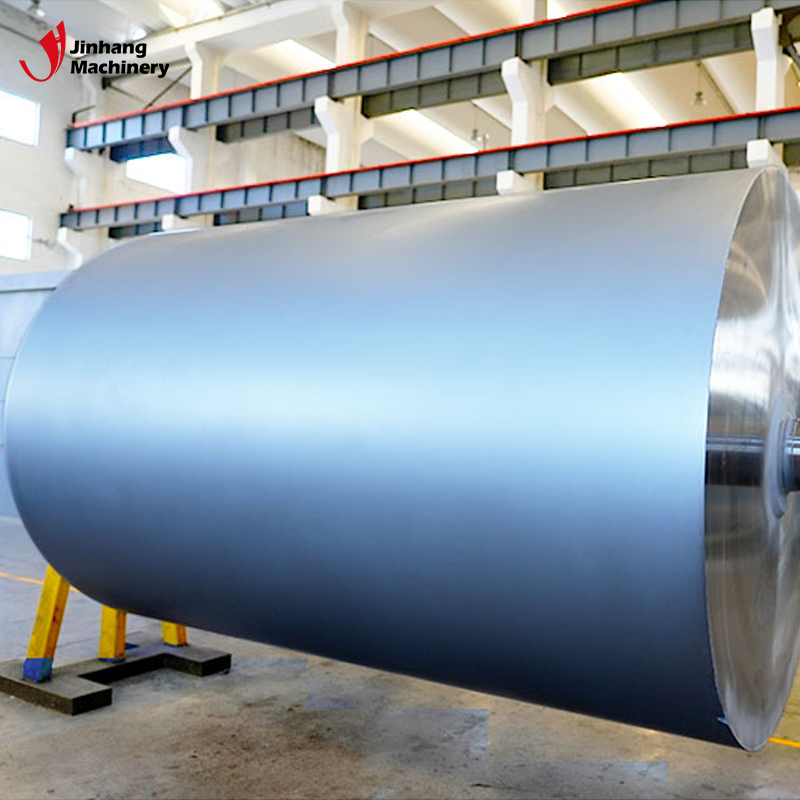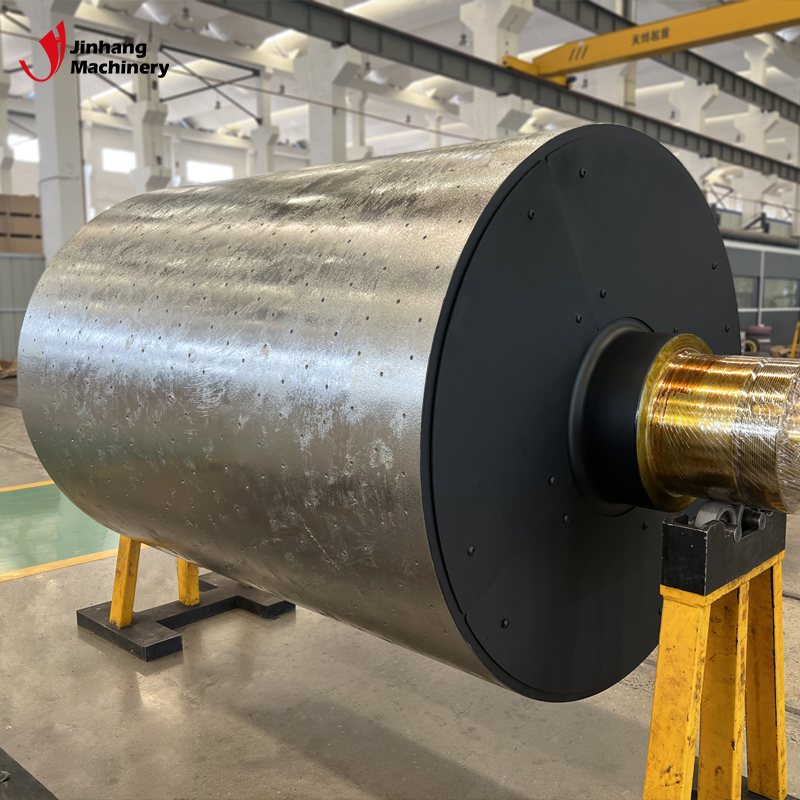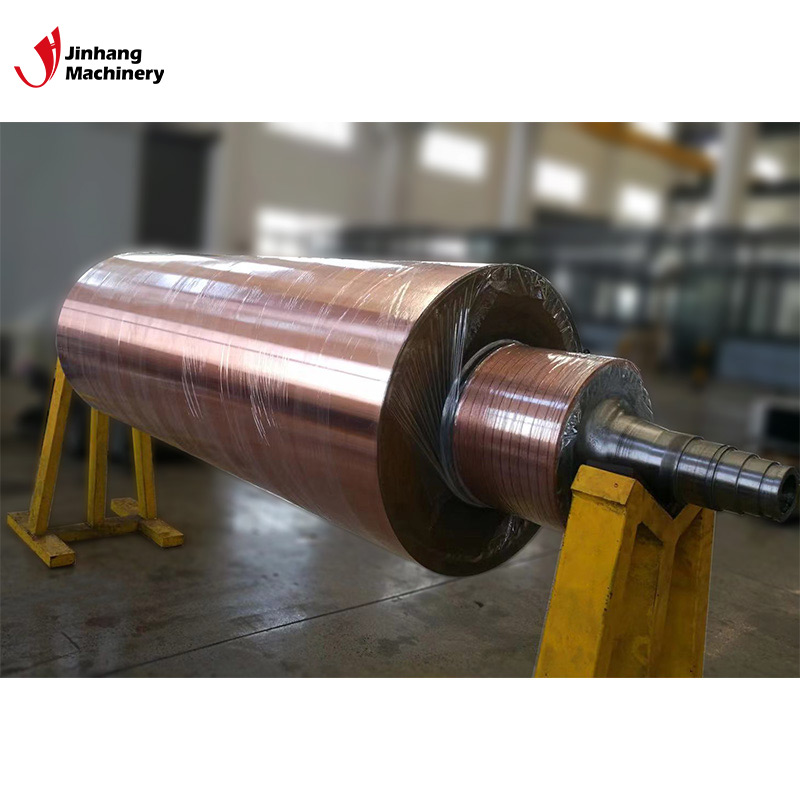What are the differences between different types of water quenching rollers?
Industrial water quenching rollers play a vital role in many metallurgical, mechanical processing and other manufacturing industries, especially in metal rolling, cooling and hardening. The design and application of water quenching rollers vary due to the different process requirements they require. Therefore, understanding the differences in the structure, materials and working principles of different types of industrial water quenching rollers is of great significance for selecting suitable water quench rollers, improving production efficiency and reducing failure rates.
This article will explore the differences between different types of industrial water quench rollers in depth, mainly from the aspects of roller body materials, structural types, application fields, working principles, etc., to provide scientific decision-making basis for production and equipment managers.

What is a water quenching roller?
A water quench roller refers to a roller used to cool or harden metal materials during industrial production processes, especially in metal hot processing such as steel rolling. These rollers are usually used through a water quenching process (also known as a water cooling process) to quickly reduce the temperature of the metal material to ensure that the metal maintains the required performance and quality during processing.
In the working principle of water quench roller, when the metal material passes through the roller, the surface of the roller will quickly absorb and conduct the heat from the metal surface. At the same time, the cooling medium (usually water) contacts the roller by spraying or immersion to achieve the purpose of effective cooling. The design and working mode of water quenching roller can be of various types according to the required cooling rate and processing effect.

What are the differences between different types of industrial water quench rollerrs?
The classification of industrial water quenching rollers can be distinguished according to multiple standards, mainly including the material, structure, cooling method and application field of the roller body. The following are several common types of water quenching rollers and their main differences:
1. Classification according to roller body material
According to the material of the roller body, industrial water quenching rollers can be divided into the following types:
Cast iron water quenching roller
Cast iron water quenching roller is the most common type, mainly made of cast iron material, with good wear resistance and impact resistance. Cast iron material itself has good thermal conductivity and easy processing, suitable for some light load cooling occasions. Cast iron water quenching rollers are usually suitable for hot rolling and cold rolling processes in the steel industry.
● Advantages: Cast iron materials have good castability, good wear resistance and high hardness, and can adapt to working environments under medium pressure.
● Disadvantages: Due to the brittleness of cast iron, cast iron water quenching rollers are prone to cracks or breakage when subjected to large impacts and high temperature loads, so they are not suitable for some high-load and high-temperature conditions.
Alloy steel water quenching rollers
Alloy steel water quench rollers often use high-strength alloy steel materials. This type of roller has good wear resistance, corrosion resistance and thermal stability, and is suitable for working environments that require high durability and load-bearing capacity. Alloy steel rollers can obtain better comprehensive properties after heat treatment, including higher hardness, fatigue resistance and longer service life.
● Advantages: Alloy steel water quench rollers have good wear resistance, corrosion resistance and high mechanical strength, and are suitable for high temperature and high load conditions.
● Disadvantages: The manufacturing cost is relatively high, and more precise processing and heat treatment processes are required.
Stainless steel water quenching roller
Stainless steel water quenching roller is widely used in chemical treatment, food processing and other industries due to its excellent corrosion resistance and high temperature resistance. Since stainless steel has strong oxidation resistance and corrosion resistance, stainless steel water quench roller is particularly suitable for working in environments containing acid, alkali or corrosive liquids.
● Advantages: Stainless steel has strong corrosion resistance and can adapt to harsh chemical environments.
● Disadvantages: The hardness of stainless steel is relatively low and may not be suitable for some occasions with high wear resistance requirements.

2. Classification by cooling method
Cooling method is a key factor in the design of water quench roller, which directly determines the cooling effect of the roller and the working conditions it is suitable for. According to different cooling methods, water quench rollers can be divided into the following types:
External water-cooled water quenching roller
The cooling method of the external water-cooled water quench roller is to cool by directly spraying or flowing water through the outer surface of the roller. In this type of water quenching roller, cooling water is usually provided by an external water source and directly acts on the surface of the roller through a nozzle or cooling system.
● Advantages: The design of the external cooling system is relatively simple and is suitable for working conditions that require rapid cooling, especially for situations where the metal surface temperature control requirements are high during hot rolling and cold rolling.
● Disadvantages: The cooling effect depends on the performance of the external water source and cooling equipment, and is easily affected by factors such as temperature fluctuations and flow changes.
Internal water-cooled water quench roller
Internally water-cooled water quench rollers usually have a water circulation system inside the roller, and water flows through the channel inside the roller to directly take away the heat inside the roller. This type of roller generally uses casting, forging or welding technology to ensure the smoothness of the internal cooling water flow channel.
● Advantages: The internal cooling system can ensure the uniform cooling effect of the roller, especially in high temperature and high load working environments, and can effectively improve the cooling efficiency of the roller.
● Disadvantages: The manufacturing process is complex, the cost is high, and the structural design requirements of the roller are high.
Hybrid cooling water quenching roller
The hybrid cooling water quenching roller combines external and internal cooling methods to achieve more efficient heat dissipation by cooling both inside and outside. Usually, this roller will achieve better heat exchange effect through the combination of internal cooling and external spraying water cooling.
● Advantages: It has high cooling efficiency and is suitable for rollers with high precision requirements.
● Disadvantages: It is difficult to manufacture and has high cost.
3. Classification according to application field
According to different application requirements, water quenching rollers can also be classified according to their application fields. In different industries, the requirements of water quenching rollers are different, so their design and manufacturing are also different.
Water quenching rollers in the steel industry
In steel production, water quench rollers are mainly used to cool rolled metal sheets or strips. Since extremely high temperature metals need to be handled during steel production, water quenching rollers in the steel industry require high temperature resistance and wear resistance, so alloy steel and cast iron water quenching rollers are the most common choices.
Mechanical processing water quenching roller
In the mechanical processing industry, water quench rollers are mostly used for cooling and hardening metal parts, especially workpieces that need to maintain metal hardness and strength during processing. Such rollers generally use a more complex cooling system to ensure that the metal workpiece can achieve the required hardness and durability.
Chemical industry water quenching roller
In the chemical industry, water quenching rollers are often used in the cooling step after chemical reactions. Since many raw materials in this industry are corrosive, water quenching rollers used in the chemical industry are usually required to have strong corrosion resistance. Stainless steel water quenching rollers are generally widely used in such environments.
4. Classification according to roller surface treatment
The surface treatment method of the water quench roller is crucial to its working effect and service life. Different surface treatment methods will affect the hardness, wear resistance and corrosion resistance of the roller.
Hard chrome water quenching roller
Hard chrome plating can effectively improve the hardness and wear resistance of the roller surface, and is particularly suitable for cooling work with high wear resistance requirements.
Nitriding water quench roller
The nitriding treatment can improve the surface hardness and corrosion resistance of the roller, making it suitable for use in high temperature environments.
Coated water quenching roller
Through coating technology, the surface of the water quench roller can obtain a layer of anti-wear and anti-corrosion coating to extend its service life.

High-Precision Rolls – Custom-Made for Your Industry Needs
JH Machinery is a leading supplier of high-precision rolls designed for various industries. Whether you're in need of cooling rolls, heating rolls, or specialized polyurethane rolls, we provide high-quality, customized solutions at affordable prices. Our products are perfect for use in the metallurgy, automotive, and packaging sectors. Contact us for bulk discounts, quotes, and more details about our low-priced, high-performance rolls.
